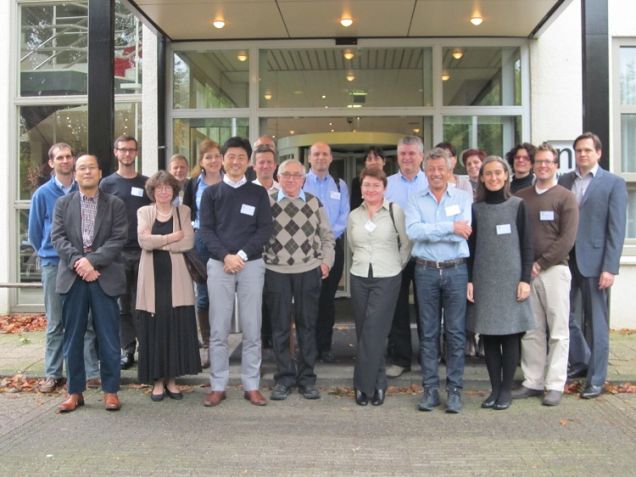Autophagy in Muscular Dystrophies: Translational approach
- Number 201
- Date 8 November 2013
Location: Naarden
This workshop was co-sponsord by the Dutch ZonMw Association
![]()
Organisers: Luciano Merlini (Bologna, Italy), Ichizo Nishino (Tokio, Japan)
Twenty participants from 10 countries (France, Finland, Germany, Italy, Japan, Sweden, The Netherlands, Turkey, United Kindom, and USA) convened for the 201st ENMC International workshop on Autophagy in Muscular Dystrophies. Participants included biochemists, biologists, pathologists, molecular geneticists, neurologists, and paediatricians. The workshop was also attended by Victor Dubowitz as Honorary Member of the ENMC.
Autophagy is a cellular process that helps to maintain cellular energy homeostasis and remove damaged organelles. Research during the last decade has made it clear that malfunctioning or failure of autophagy is associated with a wide range of human pathologies and age-related diseases. In particular dysfunction of autophagy (excessive activation or inhibition) has been recognized as a fundamental pathophysiological mechanism of several muscle disorders.
The first session of the workshop focused on the basic mechanism of autophagy in particular autophagosome formation and regulation, selective types of autophagy (chaperone-assisted and mitophagy), and the role of autophagy in muscle homeostasis. Further sessions concentrated on the current understanding of the role of autophagy in several muscle disorders including Pompe disease, Danon disease, XMEA, laminopathies, GNE myopathy, centronuclear myopathies, myofibrillar myopathies, limb-girdle muscular dystrophies, OPMD, distal myopathies, IBMPFD/VCP myopathy, Vici syndrome, collagen type VI related myopathies, congenital muscular dystrophies (MDC1A and megaconial type), and Duchenne muscular dystrophy. The result of pilot therapeutic approaches in distal myopathies with rimmed vacuoles and of a low protein diet in COL6-related myopathies were presented. A mayor topic was the presentation of the new methods of monitoring autophagy with electron microscopy or in vivo in skeletal muscle, and to monitor autophagic flux in vivo in patients. The last session was dedicated to the provision of guidelines on how to monitor autophagy in clinical trials.
The meeting succeeded in forming a new “muscle autophagy” consortium with the aim to promote and coordinate an international clinical and scientific collaborative effort to accelerate progress toward modulation of dysfunctional autophagy for therapeutic interventions in different muscular dystrophies.
A full report is submitted for publication in Neuromuscular Disorders (pdf).

ENMC
Lt. generaal van Heutszlaan 6
3743 JN BAARN
The Netherlands
+ 31- 35-5480481
enmc@enmc.org
